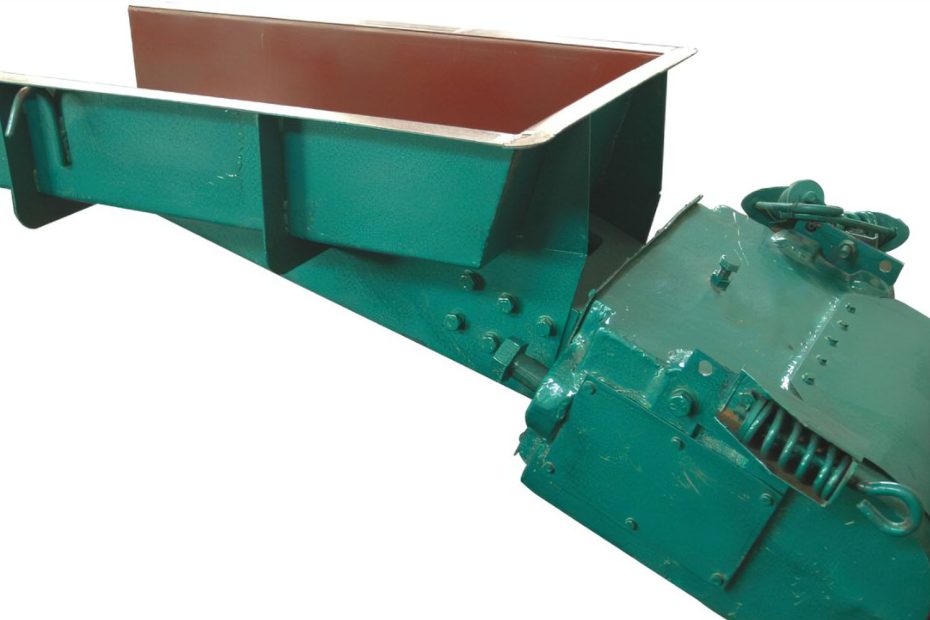In the world of material handling and processing, feeders play a crucial role in facilitating the smooth and efficient flow of materials. Traditional feeders have long been the backbone of various industries, but the emergence of electromagnetic vibratory feeders has brought a new dimension to this fundamental process. This article aims to dissect and compare the benefits of electromagnetic vibratory feeders against their traditional counterparts.
Traditional Feeders : Operating Mechanism
Traditional feeders typically operate using mechanical or electromechanical systems, relying on mechanisms like belts, screws, or rotary vane feeders to transport materials.
Mechanical Components
- Utilizes physical components to move and transport materials.
- Often involves belts, chains, or augers for material conveyance.
Limited Control
- Control over the flow of materials is generally less precise compared to electromagnetic vibratory feeders.
- Susceptible to variations in material properties.
Challenges with Traditional Feeders
Material Segregation
Certain materials may segregate during the feeding process, leading to uneven distribution.
Limited Adjustability
Adjusting the feed rate or dealing with material flow disruptions may be time-consuming.
Electromagnetic Vibratory Feeders: Operating Mechanism
The electromagnetic vibrating feeder is used to uniformly or quantitatively supply block, granular or powdery materials from storage silos or other storage equipment to the receiving equipment. It is an essential equipment for the automation of flow operations.
Electromagnetic vibratory feeders use the principles of magnetism and vibration to convey materials, providing a more dynamic and versatile approach to material handling.
Vibration-Based Conveyance
Utilizes electromagnets to generate vibrations that move and convey materials.
Adjusting vibration frequency allows for precise control over material flow.
Non-contact Conveyance
Eliminates the need for physical contact with materials, minimizing wear and reducing the risk of material segregation.
Top 4 Advantages of Electromagnetic Vibratory Feeders
| Advantages | Description |
|---|---|
| 1. Precise Control | Vibration frequency adjustments offer precise control over material flow. |
| 2. Non-contact Operation | Minimizes wear on materials and reduces the risk of segregation during feeding. |
| 3. Highly Adaptable | Suitable for a wide range of materials, from fine powders to larger granules. |
| 4. Low Maintenance | Non-contact operation reduces wear and tear, leading to lower maintenance requirements. |

Comparative Analysis Of Key Factors
Precision and Consistency
Electromagnetic vibratory feeders excel in providing precise control over material flow, ensuring consistent and uniform distribution. Traditional feeders may struggle with maintaining such precision.
Adaptability to Material Properties
Electromagnetic vibratory feeders are highly adaptable, capable of handling a variety of materials without segregation issues. Traditional feeders may face challenges with certain materials.
| Criteria | Traditional Feeders | Electromagnetic Vibratory Feeders |
|---|---|---|
| Precision Control | Limited | High |
| Material Adaptability | Variable depending on design | Highly Adaptable |
| Wear and Maintenance | Moderate to High | Low |
| Material Segregation | Potential | Minimized |
Conclusion
Electromagnetic vibratory feeders find favor in mining and aggregates industries where precise material control and minimal wear are crucial for efficient operations. Traditional feeders may struggle with abrasive materials, leading to higher maintenance costs.
As industries evolve, the choice between traditional and electromagnetic vibratory feeders becomes increasingly critical. While traditional feeders have been foundational in material handling, the dynamic approach of electromagnetic vibratory feeders offers a host of advantages, from precise control to adaptability across various materials.
The decision ultimately rests on the specific needs of the industry, the nature of materials being handled, and the emphasis on precision and efficiency. As technology continues to shape material handling processes, electromagnetic vibratory feeders stand out as a dynamic and efficient solution for the future.
